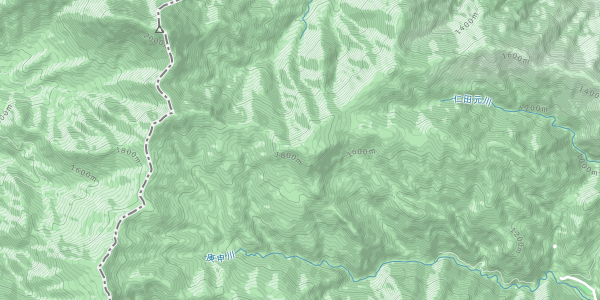Saturday May 13, 2000
Details
by Hellevi Raita
We left Seveneleven at 7.30, remarkably late
to be a TWMC-hike, all the five of us stuffed into Terry's car:
Paul, Neil, Ralf, Terry and myself. We followed Route 125, with
the intention of then taking R 408, but Terry decided to take
a short-cut, as he put it, green road 15, intersecting with R
50 just before Oyama city. Would otherwise have been a smart move,
but there were quite a few road works on the way slowing down
the pace.
We arrived at Funaishi-pass at noon and started
our extra walk to the small peak of Bizentateyama, from the parking
at appr. 1000 m only an elevation of 200 m. There were very good
views to all directions from the peak and nice poink flowers in
the trees near the peak. The weather was partly cloudy, a little
sunny as we had something to eat watching a group of Japanese
take their group photograph with the peak sign in the background.
The peak was not very big, so although the group of Japanese consisted
of less than ten people and there were only five of us, it felt
crowdy until they left. According to the map it should have been
a 2hrs 30 min walk, but you can easily take an hour off this estimation.
For our main hike we parked at Ginzan-daira,
next to the gate where the road is closed off. We made our way
to the mountain hut, a hike of a rough two hours, excluding a
15 min break at Ichi-no-torii. For about half of the way, one
walks along a closed off road, which is easy. Along the road we
spotted some snow monkeys, they were rather shy in contrast to
those in Nikko that aggressively beg for food. These guys just
turned their backs at us and ran further up the hill whenever
Ralf or me pointed a camera at them, as if they knew what we were
doing. Then we reached a resting place next to the water falls
area, and from there on the trail was a rocky one in the woods,
not a very difficult one either, of course depending on the weight
of your ruck sack. Despite Paul's famously heavy luggage, him
and Neil stretched off on their tall legs and were resting at
the balcony of the hut when the rest of us finally arrived. On
the way we accountered the half-way stone, where a tale tells
that a father used to come and meet his daughter after marrying
her to a frog, having been promised riches. Somewhat later there
was the two frogs-stone, a rock looking like two huge frogs making
it out. Only a few minutes after we arrived at the hut, Koshin
sansou (the hut), it started to rain, so our planned barbeque
had to take place indoors although there is a fire place outside
of the hut. Fortunately Terry had been thoughtful of that, and
we had brought small gas burners along.
Except for us, there was only an elderly Japanese
man staying at the unmanned hut that night.
While the rest of us were preparing our futons upstairs, we heard
a terrifying scream from Paul, who'd gone down to the "kitchen"
(a little room with two sinks and a couple of kettles) to take
off his contact lenses. In the sink he encountered "madarakamadouma",
a pretty 3 centimeters long bronzecoloured waterhop with tall
legs and tentacles. there were lots of them in the sinks, and
they immediately fell collectively in love with Paul, a relationship
that would last for the rest of our stay at the hut. Paul later
told us he yelled because of the rusty water coming from the long
unused faucet. As we had our feast of barbequed vegetables, sausages
and beefs, wine, beer and sake, the Japanese man had already gone
to bed. Our party in the light of the shrine candles given to
us by the Japanese man was only disrupted by one of Paul's friends,
who looking for his lover first jumped at Paul from the table,
finally ending up in Neil's cup of what ever something. Neil washed
him down in the sink again. What the Japanese man's sleep might
have been disrupted by we can only guess. In the late night, Ralf
managed to scare off a hurd of deer that had been resting outside
the hut when going out for a leak. Our sleep was, however, disrupted
by a thunder storm sounding like the end of the world, and rain
like pee from hell. Paul, the only one who managed to sleep through
all the other noise, was only woken by one his bronze-coloured
friends crawling over his face... At five in the morning the Japanese
man left the hut for his hike. Myself having just fallen asleep
after the thunder storm, I was about to shout at Paul to stop
digging in his ruck sack at that hour, but then I heard the door
slam.
By the time we were supposed to leave, at 7.30,
it was still raining. We had planned to climb up to the 1900 m
Koshin-san, a steep ascent of 400 m over only 1,3 km, then continue
over a ridge to Nokogiriyama (1998m) and return through a valley
to the hut. This we estimated to take five hours, and then we
would descend to the parking for onsen. But the rain kept us inside
the hut for another hour, and leaving at 8.40 we reached Koshin-san
at 10 passing after chains, ladders (including one particularly
nasty made of wood hanging horizontally at the side of a rock,
looking rotten and insecure) and steep muddy passages. On the
top of the mountain the trail leading to the actual peak was rather
flat, and in the woods there was some snow left. Occasionally
we'd sink knee-deep into the snow. Such a strange feeling walking
in snow wearing a sweaty t-shirt! At the peak of Koshin-san we
found ourselves inside a cloud, with a sight of 200 m. The Japanese
man had left a note for us telling he was heading for the far-away
peak of Sukai-san, on of the 100 best hiking mountains in Japan.
He had reached the peak at 6.30. After counting the pros and cons
of continuing and turning back to the hut over and over again,
we finally decided to return because of the snow, the bad sight,
the unreliable weather and the fact that we were late in our schedule,
making it almost a sure thing we'd have to the last part of our
walk in the dark. Walking down to the hut took about an hour,
and wasn't as difficult as one had imagined walking up. However,
it was just at the nasty wooden ladder that we'd meet one of the
few persons we met on their way up. From the hut we went to nearby
viewing point, Tenka-no-miharashi , where we enjoyed our lunch
and nice views over much of the surrounding valleys. The ridge
and the mountain peaks were covered with clouds for almost all
of the time.
On our way down to the parking, which in itself
took two hours for the slower part of the group, it started thundering
and raining again. The longlegged reached the parking much earlier.
Leaving a bag of garbage hanging at the car door, they were hiding
in a small cabin as we arrived, a clear sign of protest. When
we reached the onsen, Kazika-sou, only a few hunderd meters away,
it was raining very heavily, but the hot bath gave us a nice rest.
Unfortunately we couldn't have a meal at that place, since the
kitchen had already closed (at 4 pm). When we got out of the onsen
we had sunshine, and we met the guy who had been staying at the
hut. He told us he didn't after all go to Sukai-san, because there
was so much snow and ice on the between the first two peaks. Crossing
it in the rain had taken so much of his time and energy that even
though he had only fulfilled the route we had planned to take,
he had ran
out his water and food supplies before reaching the mountain hut.
We shrudded at the thought of arriving at the onsen four hours
later than him as we packed into the car and headed for Tsukuba.
In Oota city we stopped to eat a very nice restaurant (Hyoemon?)
that I was meaning to recommend, since the portions we got were
big, tasty and cheap, but I have lost my receipt... But for most
of the way back we could enjoy a spectacular show of thunder lightenings
in the east, it just went on for hours, and lit up the far away
sky in different colours.
Back to the
Home Page
Organiser
Location




